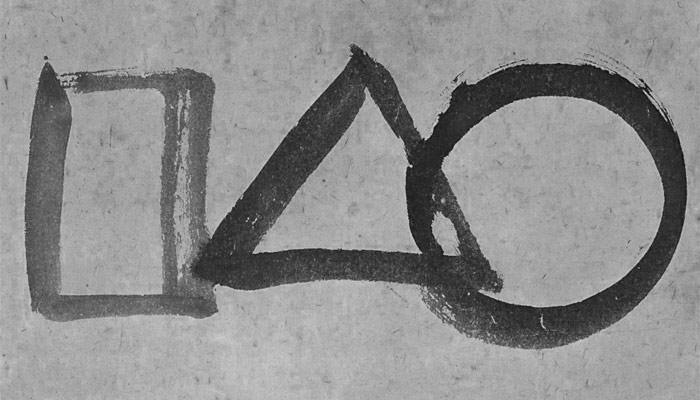-
Sangen – The Triangle, Circle and Square in Aikido
The founder of Aikido, Morihei Ueshiba, used the symbols of the triangle, circle, and square (△ ○ □) to convey key philosophical concepts central to Aikido. These symbols represent the Sangen 三元 in the Shinto concept of Ichirei Shikon Sangen Hachiriki 一霊四魂三元八力, a framework used to explain the nature of the universe. While a detailed explanation of this concept is beyond the scope of this article, its basic understanding is as follows: Ichirei is the One Spirit, the single source of creation that forms all existence. Shikon refers to the four souls 奇霊, 荒霊, 和霊, 幸霊, which represent Wisdom 智, Bravery 勇, Intimate/Close 親 and Love 愛. Hachiriki refers to…
-
Zanshin and Mushin – The Two Martial ‘Hearts’ of Aikido
Zanshin 残心 is a crucial concept in Japanese martial arts. Literally, Zan 残 means “remaining” or “lingering,” and Shin 心 means “heart,” but it is more accurately understood as “mind” in this context. In Asian culture, Shin extends beyond the physical heart, encompassing both the mind and spirit, blending cognitive and emotional experiences. The mind and heart are seen as deeply interconnected. Thus, Zanshin refers to a state of awareness, alertness, and presence of mind, particularly after executing a technique, even when the opponent appears to have lost the ability to continue. In practice, Zanshin manifests differently across martial arts. For example, in Kyudo 弓道 (Japanese archery), it is the…

